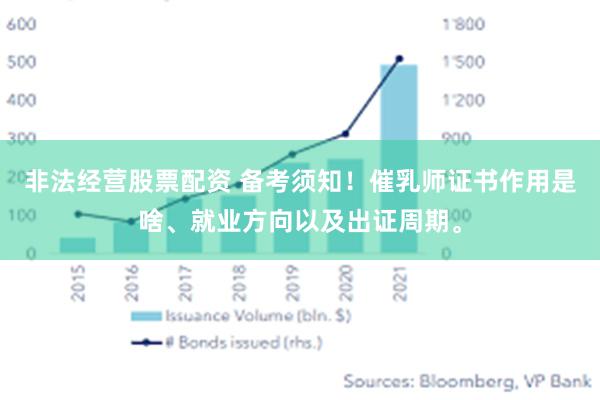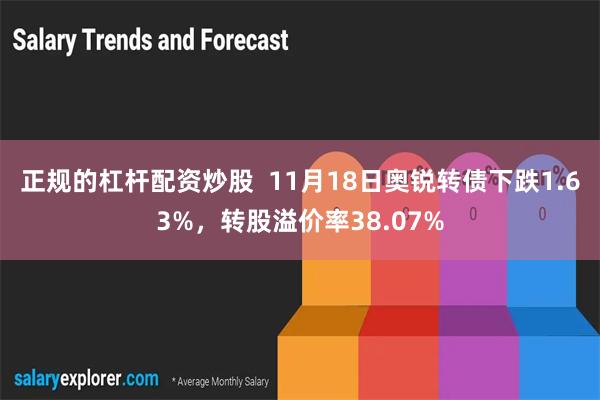炒股如何配资 Wall Street Frontline|Matthew Martin: Rates are likely to be held flat at the Fed's June meeting

Welcome to Wall Street Frontline. According to the Bureau of Economic Analysis, U.S. Gross Domestic Product rose 1.3% annualized rate in the first three months of this year, below the previous estimate of 1.6%, primarily reflecting softer consumer spending on goods.
Concurrently, the Federal Reserve's Beige Book highlighted that consumers showing increased price sensitivity and resistance to further price hikes. On the inflation front, the personal consumption expenditures price index — rose at a 3.3% annualized rate in the first quarter, slightly down from the initial projection.
What are the factors that have influenced consumer spending? How will the recent economic data affect the interest rates? Today, we invited Matthew Martin, U.S. economist at Oxford Economics, to provide his insights on recent economic data and macroeconomy.
Wall Street Frontline: Hello, Matthew. Thank you very much for joining us.
Matthew Martin:Hello. Thanks for having me.
Wall Street Frontline: So, first question, let's look at consumer spending together. The consumer spending in the U.S. was softer than expected in the first quarter. However, according to the most recent Conference Board survey, U.S. consumer confidence actually rebounded in May, from 97.5 to 102, which is the first bound after three months of decline. So, what do you believe are the driving factors contributing to this increase in consumer confidence?
Matthew Martin:Sure. Now, the rise in consumer confidence was a bit of a surprise, particularly given that the alternate measure of consumer sentiment produced by University of Michigan did show declines in April as well. Now, it's also not a secret that consumer confidence has been a bit dour over the beginning of the year. This has mainly been driven by high inflation, which has been eating into consumer budgets, as well as a loosening labor market in which jobs are less readily available to come by. However, in April, consumers were dealt with lower gasoline prices and higher equity prices. Changes in both of these tend to be more visible to consumers on a day-to-day basis, so that tends to move the consumer confidence index on a month-to-month basis as well.
However, we would say that there are things that will most likely mean consumer confidence isn't going to see a large rebound from here, and it's most likely to move sideways. Recession fears are elevated, financial security concerns are rising as well, but at the same time, the economy is still strong, and the labor market is still resilient. So, we think consumer confidence is likely to move sideways from here.
Wall Street Frontline: Also, the Beige book mentions that consumers are increasingly price sensitive and kind of pushing back against additional price increases. So, what is your recent outlook for inflation in the near term?
Matthew Martin: Certainly, prices have been more stubborn and more elevated than we expected at the start of this year. There was some assumption that seasonality issues were pushing up prices at the beginning, and there might be some credence behind that. However, it's important to note that shelter prices have been sticky, and so has services inflation. And so, that can't be dismissed. What we would say is that there is encouraging news on the horizon. We think there is disinflation in the pipeline. This is going to come through seasonality issues that were pushing up prices at the beginning year, are likely to drag on prices the mid and end of the year. Measures of rental price indices from Zillow and Apartment List are showing rental price inflation has been falling for 12 months. We think it's only a matter of time until that shows up in the CPI and PCE measures. And finally, we think that there is a softening in the labor market, which is going to lead to wage deceleration, which then should feed through to lower services inflation. So, overall, we do think there is encouraging news on the inflation front.
Wall Street Frontline: You just mentioned about jobs. Employment rose at a slight pace with only modest job gains reported in most districts. So, what is your viewpoint? How do you interpret this slow job growth?
Matthew Martin:We would actually look at the slowing trend in job creation as an encouraging sign. We think this is actually showing that the balance between labor supply and labor demand is coming into better balance. Over the prior two years, businesses were unable to fill their open positions and they were competing over limited labor supply. More recently, though, as job hiring slows and open positions begin to fall, this is going to mean there is a better balance within the market. This is going to lead to wage deceleration, and that's going to help the Fed reach their goal of 2% overall. What's important as well, though, is we're not seeing a major uptick in layoffs. We're seeing the unemployment rate pretty low, and we expect that to stay around those levels. We do see a little bit of a rise as job trends continue to slow over the balance of the year, but unemployment rate should really just peak a little bit above 4%, which is still low by historic standards, and would probably still be categorized as a soft landing for a Fed, if inflation cooperates as well.
Wall Street Frontline: You just mentioned that employment might be slower. This is a trend. On the other hand, the Beige Book also indicated that U.S. economy expanded at a slight or modest pace since early April. Would you view this slight or modest growth as a sign of stability or a potential concern for future economic growth?
Matthew Martin: Sure. We wouldn't consider the slowdown, as noted in the Beige Book, as a sign of concern at this time, nor would the slower pace of growth as estimated by the GDP Q1 report, which, as you mentioned, showed growth was around 1.3% in the first quarter. From our viewpoint, it was always likely that growth was going to slow from the unsustainable levels seen through last year. With interest rates high, this was always going to weigh on demand in the broader economy, so some slowing is expected. However, we think the consumer, which is the real engine of the economy overall, is really in good shape. Therefore, we think consumer spending is going to ensure that economic growth remains robust, and we're not really concerned about a recession in the near term. However, that's not without risks. One area that we would like to highlight is certainly on the lower-income and middle-income households, which are starting to show some signs of financial distress. These households likely have worked through their excess savings they built up during the pandemic. They also are less likely to have benefited from higher equity prices and higher home prices as well. So if the labor market was to slow down, or if inflation remained stickier, this could put these households in a precarious position. However, they represent a small segment of consumer spending and an even smaller segment of GDP overall, so their slower consumer spending is not likely to push the economy into a recession, but it certainly would be a warning sign for the overall economy.
Wall Street Frontline: Another sign is the PCE. The U.S. PCE price index in the first quarter was revised to an annual rise of 3.3%, which is slightly lower than the expected 3.4%. So what impact will this number have on the Federal Reserve's monetary decision in June? Because this metric is one of the Federal Reserve's preferred metrics.
Matthew Martin: Absolutely. And we think that was some good news that we received at slightly lower prices at the end of the quarter, as well as slightly lower prices in April. Certainly, good signs. However, Fed officials have reiterated that they need to gain further confidence that inflation is sustainably moving towards their 2% target. And at this moment, we haven't gotten enough of good months of data on the inflation front to really garner that confidence that it's moving that direction. However, if we see results kind of like April's report that came out recently, which was 0.3% at the headline and 0.2% at the core side, these would probably be categorized as good inflation data, and we think that would help with the Fed's decision to begin cutting rates. However, June is probably too soon, and we believe rates are likely going to be held flat at that June meeting. Still, we think there is an importance to follow their communication and what they're saying at that meeting. We don't think they're going to be talking about potential rate increases, but we do think they're going to have a tone that's relatively hawkish and are going to reiterate that they're going to be dependent in regard to considering rate cuts in the future.
Wall Street Frontline: Since first half of 2024 till now, the Federal Reserve did not cut interest rates at all, not even once. Based on the economic data released in the first half of 2024, what trajectory do you think the Federal Reserve's monetary decision will be like in the second half of 2024?
Matthew Martin: We think they're going to be very cautious. The economy is still very strong despite the lower growth at the beginning of the year or slightly slower growth at the beginning of the year, and the labor market remains resilient. With both those in hand, the Fed can be very cautious when they approach rate cuts. This would be different if the economy was starting to really downturn or the labor market was beginning to weaken, then they might consider rate cuts more closely. However, with those both being healthy, they can really be cautious in their approach. So we would reiterate that they're likely going to need to see multiple months consecutively of good inflation data, and that should then bring them around to be likely to cut rates around the September time-frame, or at least in our opinion. So there needs to be a lot of things that obviously fall into place that make that happen, but again, we think there's plenty of disinflation within the pipeline, and that's going to allow them to begin cutting rates around September.
Wall Street Frontline: So how many times of interest rate cuts would you expect in the second half of 2024?
Matthew Martin: We would say that there are likely two rate cuts, one in September and one in December, although the risks are likely that there's less, and that could come later in December or even be pushed into the next year. Again, they're going to be very cautious, and they're not going to be wanting inflation to re-accelerate from here, so they're not going to want to take their foot off the brake too soon.
Wall Street Frontline: Besides inflation data, what other key indicators will you be monitoring closely?
Matthew Martin:Absolutely. I think one of the most important ones is likely the housing market. Housing costs represent a large portion of the overall budget for the consumer, and rising house prices and shelter prices are really digging into consumer budgets. So we're going to be looking to see if higher interest rates are actually weighing on the real estate market and allowing price deceleration within that market. If that's the case, that would be really beneficial to the Fed's goal. We'll also be looking at labor market statistics, like the quits rate. The quits rate is a good indicator of where wage growth is going to be coming in the next couple months, and right now it's pointing to deceleration, which is also another benefit. Finally, we're going to be looking at the state of the consumer and the health of its balance sheets. They're the real engine of the economy, and if they start to slow spending, that's going to have ramifications for the broader economy.Again, at this time, we don't think that's the case. We think they're very healthy, but certainly we'll be looking to see if there's any warning signs in the data.
出品:南方财经全媒体集团
策划:于晓娜
通榆县三一零碳智造产业园生产的风机主机叶片。(资料图) 通榆县委宣传部供图
开幕式上,清华大学美术学院院长马赛致欢迎辞。马赛赞扬同学们作品中所表现出的在新技术语境下卓越的创新能力,对传统的敬仰和对创新的无畏,体现了同学们鲜活的个性和社会责任感。马赛同时表示,美术学院正在积极进行教育教学改革,拓展跨学科合作的平台,在AI人工智能的浪潮下,如何培养面向未来的艺术家和设计师,需要学院全体师生与社会各行各业的共同探索和实践。
统筹:向秀芳
记者:周蕊
制作:段伊航(实习生)
设计:林军明 廖苑妮
更多内容请下载21财经APP炒股如何配资
likelyasgoingandis发布于:广东省声明:该文观点仅代表作者本人,搜狐号系信息发布平台,搜狐仅提供信息存储空间服务。













